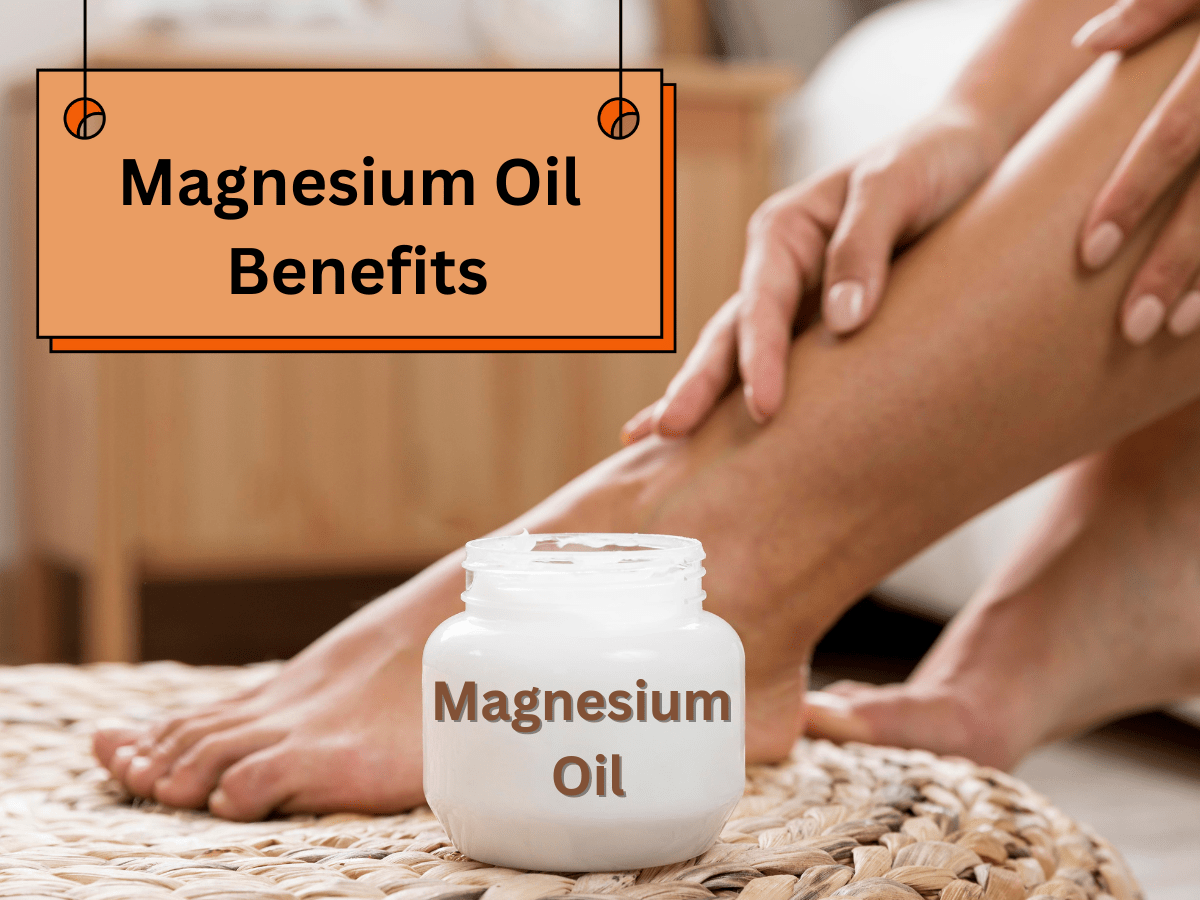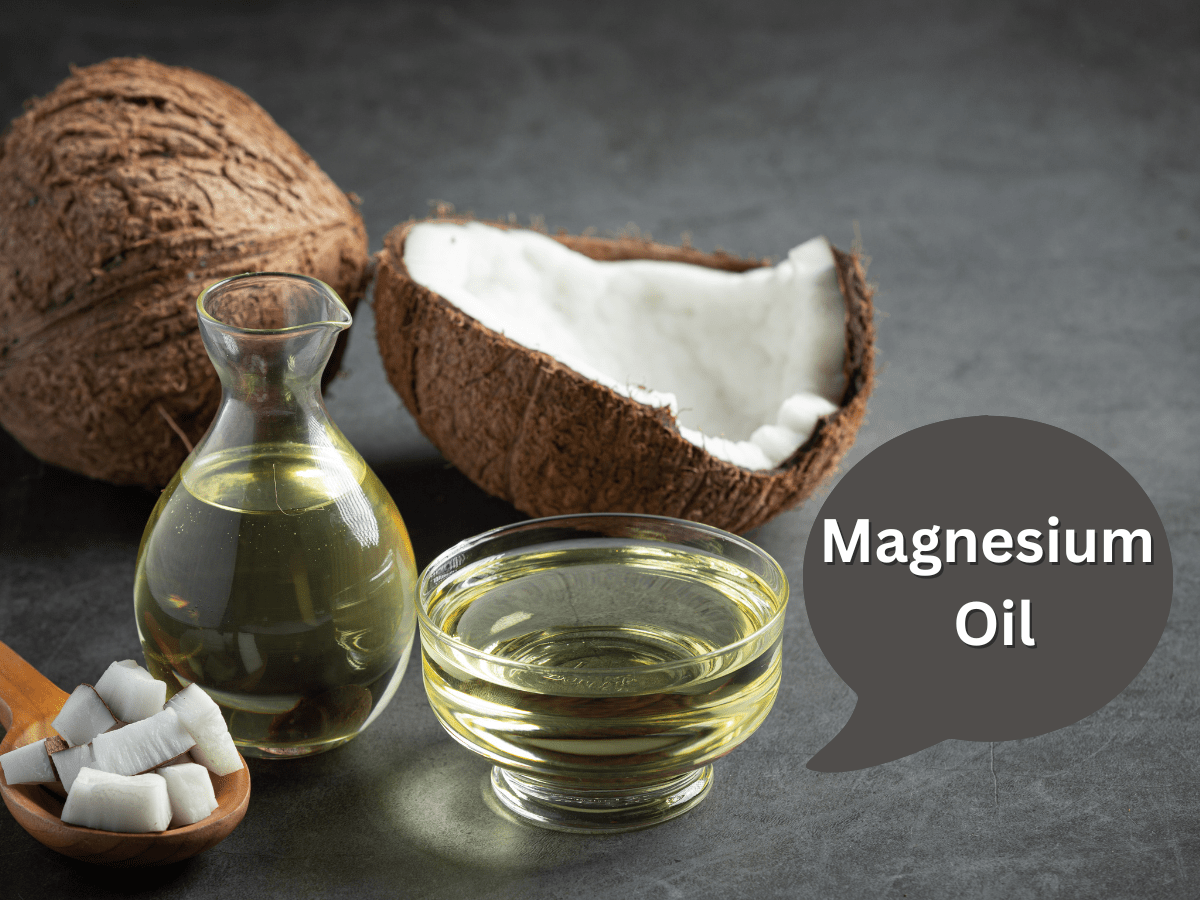Some people apply magnesium oil to their feet to improve sleep and pain. Although studies support the effectiveness of magnesium’s local (skin) applications, no studies show that the use of magnesium is useful for feet.
When I first heard of magnesium oil, I thought it was only possible to find it in high-end spas or a bit of it hidden in wellness shops. But after years of fighting restless sleep and painful muscles, I finally tried it, and it’s a complete gaming channel. Especially if this simple measure is applied to the soles of your feet, they can be naturally recharged overnight.
The uses, benefits, and best ways to apply magnesium oil for feet, while also diving into how it compares to magnesium cream, lotion, sprays, and gels. If you’ve ever wondered, “Why should you apply it to your feet?” or “Is it really better than taking a supplement?”—then this guide is written for you.
What Exactly Is Magnesium Oil?
Water-soluble magnesium chloride oil plays an important role in sleep, muscle function, and stress response. Many people use magnesium oil as part of their evening routine and spray it on areas such as their arms, legs, and back. Imagine it as a topical magnesium treatment rather than as a traditional oil.
While magnesium oil products for feet are sold for many purposes, there is little research into their use for specific conditions and effects. The skin does not absorb magnesium well, so magnesium oil can have local effects on the feet, but it remains unknown whether it can have a whole-body effect.
The term “transdermal magnesium spray” is often used because minerals are absorbed directly into the skin. This method bypasses the digestive system. That’s why many people prefer it over magnesium tablets.
Why Should You Apply It to Your Feet?
You might be asking: out of all the body parts, why the feet soles? The answer is surprisingly practical.
- The sole of the feet has larger pores, making the magnesium in the skin more effective.
- Applying magnesium oil here often calms down, especially before going to bed.
- Unassuming—There is no need to worry about coloring your clothes or leaving behind residue.
Applying magnesium oil to your feet helps your body absorb minerals directly into the bloodstream. Magnesium can pass through the outer layer of the skin, known as the epidermis, and reach blood vessels. From there, the minerals enter the bloodstream and do the work in the body that is necessary. Personally, after training, I used magnesium oil on my feet to support muscle recovery and relaxation. But soon I realized it had improved my sleep. The ritual of spraying magnesium on the feet has become a small but powerful act of self-care.
Magnesium Oil Benefits for Feet
The benefits extend far beyond relaxation. Here are some of the most notable ones:

Improved Sleep and Relaxation
Many studies have reported magnesium to improve the quality of sleep and how you get to sleep. Many people vow to apply magnesium oil before going to bed, encouraging their bodies to relax. Magnesium plays an important role in the regulation of melatonin and GABA, which affect sleep quality. “Can magnesium oil improve sleep quality?” – The answer is for many users.
Muscle Recovery and Relaxation
Athletes and fitness lovers often highlight the benefits of magnesium oil for athletes. It’s known as a natural muscle relaxation oil, helping ease post-exercise cramps. I personally noticed fewer nighttime calf cramps once I started this routine. Many people experience relief of soreness or can help relax with a gentle foot massage, foot reflexology, or foot soak. Massages with magnesium creams, oils, or Epsom salt (magnesium sulfate) foot baths may help you relax and may soothe your feet.
Pain Relief
Magnesium spray for pain relief is often used for sore joints, back tension, or even menstrual cramps. For foot pain specifically—like plantar fasciitis or simple fatigue—spraying magnesium oil spray for joint pain on your soles can feel like instant relief. Magnesium supplements have been shown to help relieve pain. One study was performed on women with fibromyalgia, a condition that causes widespread pain and tiredness. People with fibromyalgia may also have low magnesium levels, which can influence symptoms.
Reduced Stress and Anxiety
A common question is, “Does magnesium oil help with anxiety?” The calming effect of magnesium on the nervous system suggests it can. While it’s not a cure-all, many users find it helps reduce stress when paired with a bedtime ritual.
Skin Nourishment
While the first few uses may cause a slight tingling, your skin adjusts. Over time, combining organic magnesium oil with a moisturizer or magnesium lotion benefits routine and leaves feet softer and healthier.
For skin care Visit our page.
Magnesium Oil vs Other Topical Options
When exploring topical magnesium, you’ll find a variety of options:
- Magnesium lotion benefits: Gentle on skin, great for hydration.
- Magnesium cream benefits: Thicker texture, ideal for dry skin areas.
- Magnesium spray benefits: Quick and easy to apply, especially on foot soles.
- Magnesium gel benefits: Longer absorption, perfect for massages.
- Magnesium oil deodorant: Used for natural odor control.
So, which one is better? From my personal journey, I stick to the spray because it’s quick and effective for nightly use. But if you struggle with dryness, lotion or cream might be a better fit.
How To Apply Magnesium Oil to Your Feet
Magnesium oil products are available as creams, gels, oils, spots, and sprays. Available via the counter (OTC) without a prescription. Magnesium oil formulations have different ingredients and additives, which can have different effects.
Here are some simple step-by-step instructions:
- Clean your feet—quickly remove rinsing dirt and sweat.
- Spray Magnesium Oil—Use 5-10 sprays on each foot, depending on your comfort.
- Massage carefully—rub to improve absorption and add relaxation.
- Turn it on—some prefer to wash it off after 20 minutes, while others leave it overnight.
- Follow the lotion—If your skin feels dry or itchy, a moisturizer can help.
How to Make Pure Magnesium Oil at Home
If you love DIY treatments, you can create your own homemade magnesium oil recipes in just a few minutes.
- ½ cup magnesium chloride flakes
- ½ cup distilled water
- Heat the water until warm.
- Add magnesium flakes and stir until dissolved.
- Store in a spray bottle and use as needed.
This DIY magnesium oil is cost-effective and works just like store-bought versions.
Side Effects and Risks
It is unclear whether topical magnesium oil application has the same effect as taking oral magnesium supplements and eating magnesium-rich diets. Magnesium oil is generally safe, but it is worth mentioning that it has some side effects and risks.

- Irritating or stabbing: Often during the first application.
- Dry skin: Some users experience flak without moisture-free cream.
- Sensitive Skin Reaction: Have you ever wondered, “Is magnesium oil safe for sensitive skin?”
- Beyond Stress: Over-application can lead to irritation.
Determining the dosage of topical magnesium oil is difficult. Nevertheless, it’s important not to overdo it.
Magnesium Oil vs Oral Magnesium Supplements
A frequent comparison is magnesium oil against oral magnesium preparations. The differences are as follows:
- Topical Magnesium Treatment (Oils, Sprays, Creams): Direct skin tabs, avoid digestive disorders.
- Oral nutritional supplement: To measure dosage for easier measurement, measure it, and it can cause stomach problems.
For me, both are used—daily balance and the use of oral nutritional supplements to spray magnesium on the legs at night work for relaxation.
Personal Journey With Magnesium Oil for Feet
When I started, I honestly didn’t expect much. However, after a week of consistently spraying magnesium oil on my feet before going to bed, the difference between sleep and muscle preparation could not be denied. It is one of these little evening rituals that offer great rewards.
If you were skeptical of trying it, you should consider it: what if it’s a simple step that will help you wake up, relieve the pain, and feel calm? The simplest solution may be the most powerful.
FAQs
- Where is the best place to rub magnesium oil?
There are no specific guidelines on the best place to rub magnesium oil. However, a 2017 study found that applying magnesium cream to the torso, stomach, and legs slightly increased magnesium levels after 2 weeks. - How to use magnesium oil on skin besides feet?
You can apply it to arms, legs, or stomach—anywhere with a large surface area. - Where not to put magnesium oil?
It’s best to avoid putting magnesium oil near your mouth, nose, and eyes. - What is the best magnesium oil for muscle cramps?
Look for organic magnesium oil with no added fragrances. - Can magnesium oil improve sleep quality?
Yes, especially when applied before bed to the soles of the feet or shoulders.
Additional Resources
Here are a few reliable resources to explore further:




